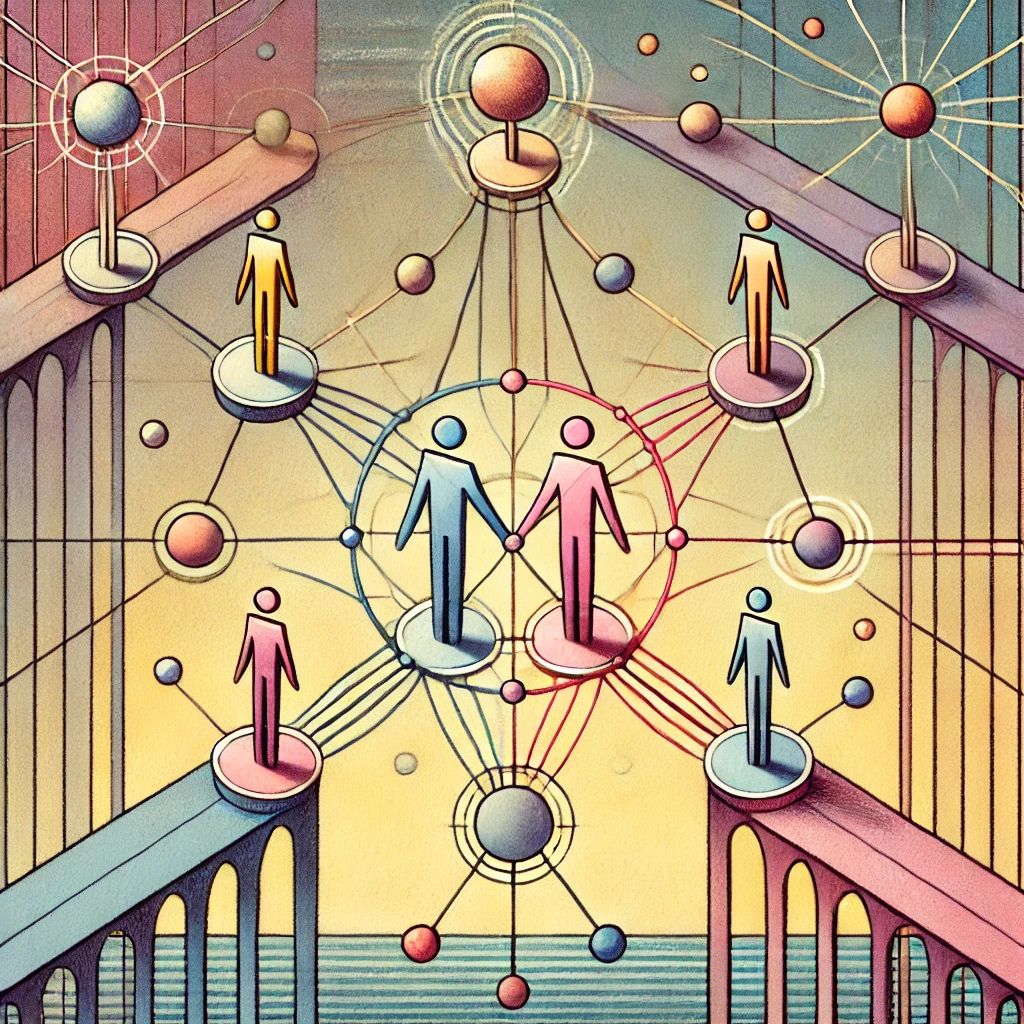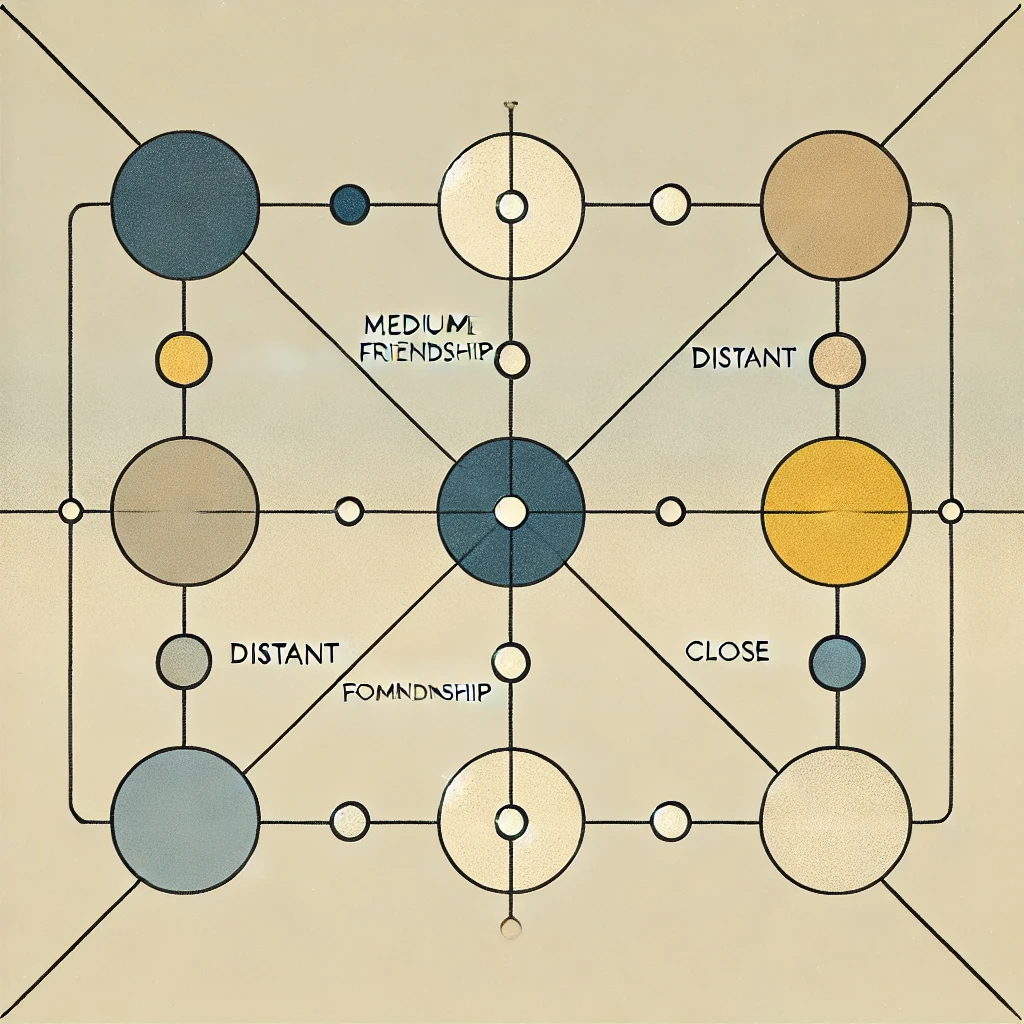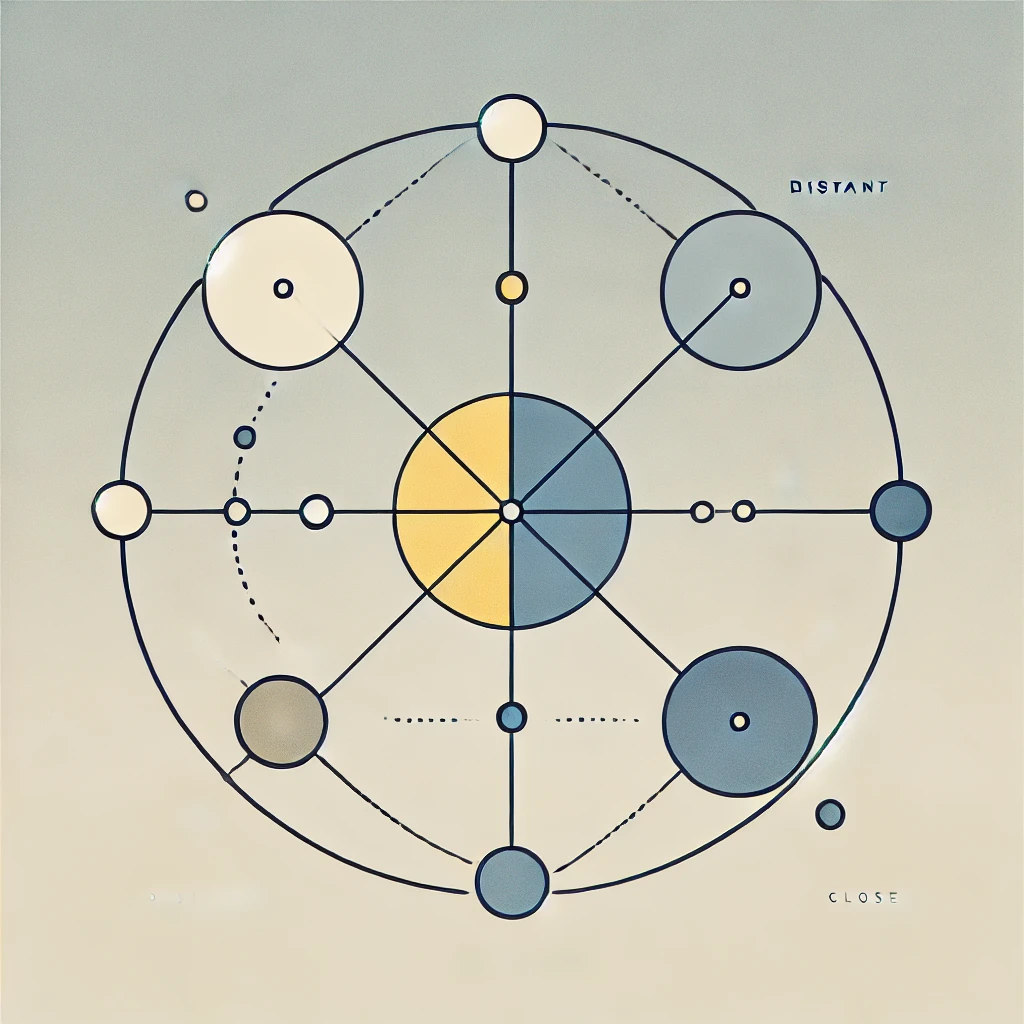
ChatGPT:
The Vexing Problem of the ‘Medium Friend’
Exploring the Dynamics of Friendship Beyond Besties
Friendships often exist on a spectrum, ranging from our closest confidants to casual acquaintances. This article delves into the often-overlooked middle category: “medium friends.” These connections are genuine but complex, testing the limits of time, emotional bandwidth, and reciprocal expectations. Through anecdotes, expert insights, and sociological frameworks, the piece unpacks the challenges and benefits of medium friendships, offering a thoughtful examination of how we navigate these ambiguous relationships.
🌟 What Are Medium Friends?
Medium friends occupy a space between best friends and acquaintances. Unlike our closest relationships, they lack clarity and formal boundaries. Yet they are more than just casual connections. Medium friends are often tied to us through shared history (like college days), common interests, or specific circumstances (e.g., a workplace or a mutual hobby).
While they add richness to our social lives, medium friends can create emotional tension. This is because they test our capacity for emotional investment without offering the same intimacy or reciprocity as best friends.
A Real-Life Example
The article begins with the story of R., a man who ranked his friendships to better understand his social dissatisfaction. While R. had a few core friends and many acquaintances, it was his medium friends who caused him the most stress. For instance, a former college friend asked for his support during her addiction recovery. Although R. cared for her, he felt conflicted about the level of involvement required. His hesitation highlighted the tension inherent in medium friendships—relationships where obligations and expectations are ambiguous.
🧠 The Problem of Ambiguity
Medium friendships are challenging precisely because they lack explicit guidelines. Sociologist Claude Fischer refers to this as “asymmetric expectation,” where one person may like or rely on the other more. Unlike romantic or close friendships, where imbalances can be discussed and resolved, such conversations feel out of place in medium friendships.
Medium friends often orbit in a “wobbly” way. During crises or celebrations, their role becomes unclear: Should they visit a sick friend, make a gesture like dropping off a meal, or simply do nothing? The absence of clarity can lead to feelings of guilt, self-reproach, or resentment.
📚 Sociological Perspectives on Friendship
Social scientists like Robin Dunbar have classified friendships into tiers:
1. Core Inner Circle: 5–6 people, including family and best friends.
2. Close Friends: 10–15 people.
3. Medium Friends: 30–40 people.
4. Acquaintances: The rest of your social network.
Dunbar’s research suggests that humans can only maintain about 150 friendships at a time, with relationships shifting over time. Medium friends, in particular, experience a high turnover rate, with 30–40% of these connections changing annually during young adulthood. These shifts often result from life transitions, such as moving, job changes, or shared new experiences.
🌍 The Role of Medium Friendships
Medium friendships may be less demanding, but they are not without value. They diversify our social networks, offering unique benefits:
• Specialized Support: A medium friend might share expertise or offer help in specific areas, like work advice or a shared hobby.
• Emotional Resilience: Having a wide network of medium and weak ties can sustain well-being during relational strain or personal challenges.
• Low Pressure: Medium friendships can thrive without heavy emotional obligations, making them freeing and enjoyable in their own right.
Experts like Beverley Fehr argue that medium friendships are not inferior but beneficial in their distinct way. They allow us to connect with more people without the pressure of deep intimacy.
💬 Navigating Medium Friendships
Managing medium friendships often involves unspoken compromises and balancing acts:
1. Setting Boundaries: Recognizing and accepting limitations in what you can offer to these relationships can prevent guilt and overextension.
2. Clear Communication: Being honest about your availability or capacity can improve understanding and reduce misaligned expectations.
3. Avoiding Guilt: Medium friendships don’t require the same level of commitment as close friendships. Embracing this can make them more enjoyable and sustainable.
🎨 Reimagining Friendship
The article suggests rethinking friendships not as hierarchies but as organic, evolving bonds. Viewing these relationships as co-created “artworks” rather than ranked connections allows us to appreciate medium friends for what they are—specific, situational, and delightful in their own way.
💡 Key Insights for the Future
Medium friendships remain underexplored in both research and popular culture, despite their prevalence and importance. Scholars suggest that by better understanding and valuing these relationships, we might address larger social challenges, such as loneliness or disconnection.
For instance, if people were more transparent about their limitations in medium friendships, they might feel empowered to act instead of being paralyzed by fear of disappointing others. As society grapples with an epidemic of loneliness, medium friendships could be a key resource for connection and support.
Summary
1. Definition of Medium Friends: Medium friends are genuine relationships that fall between close friends and acquaintances, often tied by shared history or circumstances but marked by unclear expectations.
2. The Problem of Reciprocity: The unspoken nature of medium friendships creates challenges, with one person often feeling more invested than the other, leading to tension.
3. Social Science Perspectives: Research like Dunbar’s highlights how humans naturally stratify friendships into tiers, but medium friendships lack formal study or guidance.
4. Emotional Struggles: Medium friendships can evoke guilt or anxiety, especially during critical moments like illness or celebrations, where expectations are ambiguous.
5. Churn in Medium Friendships: Medium friends frequently change due to life transitions, such as job changes, relocations, or shared new experiences.
6. Reframing Friendship: Viewing medium friendships as organic creations rather than ranked relationships allows them to serve specific, less demanding roles.
7. Strengths of Medium Friends: These connections diversify social networks, offering resilience and emotional support without overwhelming obligations.
8. Neglected Research Area: Despite their prevalence, the emotional and psychological benefits of medium friendships are largely unexplored.
9. Navigating Challenges: Setting clear boundaries and communicating limitations can mitigate the guilt or confusion surrounding medium friendships.
10. Broader Social Impacts: Medium friendships, if valued properly, can play a role in reducing loneliness and fostering richer social ecosystems.

FAQs
1. What is a medium friend?
A medium friend is someone who falls between a close friend and an acquaintance. They are genuine friends, often tied by shared history, interests, or circumstances, but they lack the clarity and intensity of close friendships.
2. Why do medium friendships feel so complicated?
Medium friendships are ambiguous because they lack clear boundaries or explicit rules. This ambiguity can lead to mismatched expectations and emotional tension, especially during crises or celebrations.
3. How do sociologists categorize friendships?
Sociologists like Robin Dunbar classify friendships into tiers:
• Core Inner Circle: 5–6 close friends or family.
• Close Friends: 10–15 people.
• Medium Friends: 30–40 people.
• Acquaintances: The broader social network.
4. Why do medium friends cause guilt or anxiety?
Medium friendships can cause guilt because the obligations are unclear. For example, if a medium friend seeks help during a crisis, it may feel awkward to decide how much support to offer, leading to self-reproach or discomfort.
5. How often do medium friendships change?
Medium friendships experience high turnover, especially in young adulthood, where 30–40% of these relationships may change annually. Life transitions like moving or changing jobs often shift these connections.
6. Are medium friendships valuable?
Yes, medium friendships diversify social networks and provide unique benefits, such as specialized support and emotional resilience. They allow for connection without the intense obligations of close friendships.
7. How can I navigate medium friendships better?
• Set boundaries: Recognize your limits in terms of time and energy.
• Communicate clearly: Be honest about your availability to avoid mismatched expectations.
• Embrace flexibility: Accept medium friendships for their situational and evolving nature.
8. Why aren’t medium friendships studied more?
Unlike close friendships or family relationships, medium friendships have received little attention from social scientists. Their dynamics are complex but not as easily categorized or defined.
9. What happens to medium friends during crises?
During crises, medium friends often feel unsure about their role. They may hesitate to act, not knowing whether to offer significant support or maintain a more distant stance.
10. Can medium friendships help with loneliness?
Yes, medium friendships can play a role in combating loneliness. Their diversity and situational connections can provide meaningful companionship without requiring deep intimacy.

